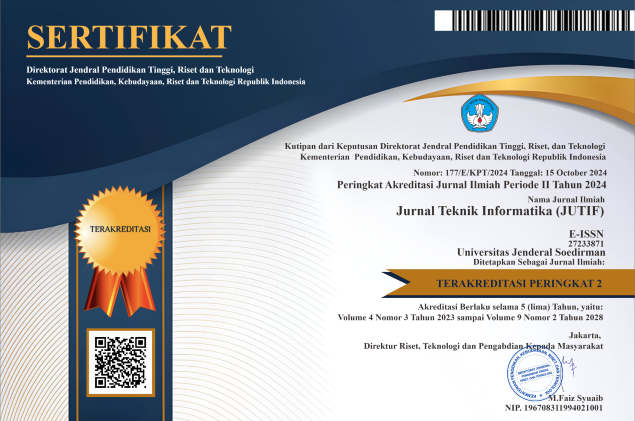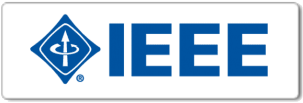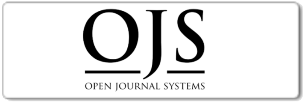A Hybrid SOAR-BSC-AHP Framework for Strategy Selection in Digital Cultural Tourism
DOI:
https://doi.org/10.52436/1.jutif.2025.6.4.4886Keywords:
Analytic Hierarchy Process, Balanced Scorecard, Cultural Tourism, SOAR AnalysisAbstract
Digital transformation in cultural tourism presents significant challenges, particularly in heritage villages like Kotagede, Yogyakarta. Problems such as limited infrastructure, low digital literacy, and the absence of a structured planning framework hinder progress toward community-based sustainable tourism development. This study addresses these challenges by proposing an integrated decision-making framework that combines SOAR analysis, the Balanced Scorecard (BSC), and the Analytic Hierarchy Process (AHP). The SOAR-BSC framework captures strategic objectives from qualitative data through focus group discussions and stakeholder interviews, while the AHP quantitatively prioritizes eight strategic alternatives based on hierarchical criteria and subcriteria. The most impactful strategies identified were: (1) developing partnerships with tour operators, and (2) promoting community cultural education and training. The Learning and Growth Perspective emerged as the most influential factor (weight = 0.5549), highlighting the importance of community empowerment and digital skills development. Sensitivity analysis and cross-validation using the Simple Additive Weighting (SAW) method confirmed the consistency and robustness of the rankings. In practice, this framework offers a participatory, data-driven guide for digital transformation in heritage tourism, supporting not only improved destination management but also long-term cultural preservation through inclusive digital initiatives.
Downloads
References
L. Lin, “Research on the Development of the Integration of the Internet and Tourism Industry,” J Phys Conf Ser, vol. 1533, no. 4, p. 042006, Apr. 2020, doi: 10.1088/1742-6596/1533/4/042006.
I. B. M. W. Parta and I. A. K. Maharani, “Cultural Tourism In Indonesia: Systematic Literature Review,” Vidyottama Sanatana: International Journal of Hindu Science and Religious Studies, vol. 7, no. 2, pp. 189–204, Oct. 2023, doi: 10.25078/vidyottama.v7i2.2498.
F. Lestari, M. M. Dali, and N. Che-Ha, “Towards Smart Tourism Development in City Branding Era in Indonesia,” 2022. doi: 10.2991/978-2-494069-07-7_27.
A. D. Rini, “Digitalization in the Community-based Tourism Development in Peripheral Areas: A Case Study of Sumbermanjing Wetan Village, Malang Regency,” JAS (Journal of ASEAN Studies), vol. 7, no. 2, Jan. 2020, doi: 10.21512/jas.v7i2.6115.
W. D. Nanda, I. Widianingsih, and A. Z. Miftah, “The Linkage of Digital Transformation and Tourism Development Policies in Indonesia from 1879–2022: Trends and Implications for the Future,” Sustainability, vol. 15, no. 13, p. 10201, Jun. 2023, doi: 10.3390/su151310201.
U. Gretzel and C. Koo, “Smart tourism cities: a duality of place where technology supports the convergence of touristic and residential experiences,” Asia Pacific Journal of Tourism Research, vol. 26, no. 4, pp. 352–364, Apr. 2021, doi: 10.1080/10941665.2021.1897636.
K. Margatan, “Building Sustainable Tourism: The Adaptation of Digital Transformation on Travel Agencys and Impact on Economic Growth,” Dinasti International Journal of Economics, Finance & Accounting, vol. 6, no. 1, pp. 358–366, Mar. 2025, doi: 10.38035/dijefa.v6i1.4031.
C. Jiang and S. W. Phoong, “A ten-year review analysis of the impact of digitization on tourism development (2012–2022),” Humanit Soc Sci Commun, vol. 10, no. 1, p. 665, Oct. 2023, doi: 10.1057/s41599-023-02150-7.
M. D. M. Makmun, C. Muryani, and P. Wijayanti, “The tourism impact on the social economic life of community in Ngargoyoso Sub-district, Karanganyar Regency,” IOP Conf Ser Earth Environ Sci, vol. 683, no. 1, p. 012114, Mar. 2021, doi: 10.1088/1755-1315/683/1/012114.
Y. I. Indainanto, M. I. K. Saraan, E. N. Julianto, C. Safira, A. Saptiyono, and M. H. Thamrin, “Analysis of local heritage tourism development strategy in Indonesia: Case study in Purbayan Village,” IOP Conf Ser Earth Environ Sci, vol. 1352, no. 1, p. 012106, May 2024, doi: 10.1088/1755-1315/1352/1/012106.
N. Kurniasari, U. Muawanah, and C. Yuliaty, “Strengthening maritime cultures as a source of creative ideas for maritime tourisme development in Kuta, Central Lombok,” IOP Conf Ser Earth Environ Sci, vol. 674, no. 1, p. 012064, Feb. 2021, doi: 10.1088/1755-1315/674/1/012064.
R. S. Kaplan and D. P. Norton, The balanced scorecard: measures that drive performance, vol. 70. Harvard Business Review Boston, MA, USA, 2005.
M. L. Cole and J. M. Stavros, “SOAR: A Framework to Build Positive Psychological Capacity in Strategic Thinking, Planning, and Leading,” in Theoretical Approaches to Multi-Cultural Positive Psychological Interventions, Cham: Springer International Publishing, 2019, pp. 505–521. doi: 10.1007/978-3-030-20583-6_23.
S. Sarjana and J. R. Widokarti, “Strengthening Partnership Strategy for Digital Development in Water Tourism,” in Proceedings of the 2nd International Seminar on Business, Economics, Social Science and Technology (ISBEST 2019), Paris, France: Atlantis Press, 2020. doi: 10.2991/aebmr.k.200522.026.
S. Ap and P. Henggar, “Strategy to Improve the Tourism Quality through Translation based on Local Wisdom,” in Proceedings of the First International Conference on Literature Innovation in Chinese Language, LIONG 2021, 19-20 October 2021, Purwokerto, Indonesia, EAI, 2022. doi: 10.4108/eai.19-10-2021.2316556.
F. Ardyansyah and K. Nasik, “Analysis of MSME Performance in Lombang Beach Tourism in Sumenep Regency According to Balanced Scorecard Perspective,” in Proceedings of the 5th International Conference of Educational Science, ICONSEIR 2023, 30 November 2023, Medan, Indonesia, EAI, 2024. doi: 10.4108/eai.30-11-2023.2348196.
Y. A. Singgalen, “Strategic Planning for Student Guidance Information System Design in Tourism Department using Ward and Peppard Framework,” Journal of Information Systems and Informatics, vol. 5, no. 2, pp. 481–496, May 2023, doi: 10.51519/journalisi.v5i2.486.
T. L. Saaty, The analytic hierarchy process. New York: McGraw-Hill, 1980.
W. Ossadnik, S. Schinke, and R. H. Kaspar, “Group Aggregation Techniques for Analytic Hierarchy Process and Analytic Network Process: A Comparative Analysis,” Group Decis Negot, vol. 25, no. 2, pp. 421–457, Mar. 2016, doi: 10.1007/s10726-015-9448-4.
S. Kusumadewi and R. Kurniawan, “Pemilihan Strategi Implementasi Kesehatan Digital Pada Kelompok Pengambil Keputusan Menggunakan Metode Vikor,” Jurnal Teknologi Informasi dan Ilmu Komputer, vol. 11, no. 4, pp. 787–796, Aug. 2024, doi: 10.25126/jtiik.1148556.
Additional Files
Published
How to Cite
Issue
Section
License
Copyright (c) 2025 Rahadian Kurniawan, Sri Kusumadewi, Ari Sujarwo

This work is licensed under a Creative Commons Attribution 4.0 International License.



























